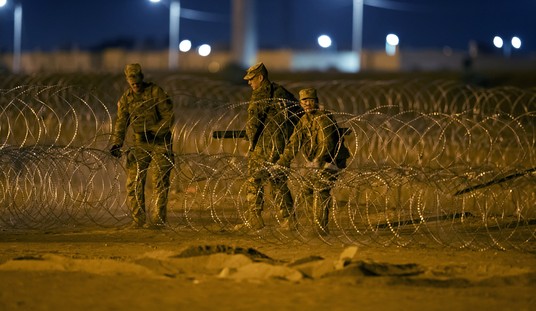Not Christians or Shi’ites this time, but the Yazidis, whose numbers reach as high as 600,000 in Iraq — and dropping, especially in Sinjar. The sacking of Sinjar has forced the Yazidis to flee to nearby Mount Sinjar to escape brutal execution. What they face on the mountain is a death just as certain, though, and perhaps as torturous:
Stranded on a barren mountaintop, thousands of minority Iraqis are faced with a bleak choice: descend and risk slaughter at the hands of the encircled Sunni extremists or sit tight and risk dying of thirst.
Humanitarian agencies said Tuesday that between 10,000 and 40,000 civilians remain trapped on Mount Sinjar since being driven out of surrounding villages and the town of Sinjar two days earlier. But the mountain that had looked like a refuge is becoming a graveyard for their children.
Unable to dig deep into the rocky mountainside, displaced families said they have buried young and elderly victims of the harsh conditions in shallow graves, their bodies covered with stones. Iraqi government planes attempted to airdrop bottled water to the mountain on Monday night but reached few of those marooned.
“There are children dying on the mountain, on the roads,” said Marzio Babille, the Iraq representative for the United Nations Children’s Fund (UNICEF). “There is no water, there is no vegetation, they are completely cut off and surrounded by Islamic State. It’s a disaster, a total disaster.”
Most of those who fled Sinjar are from the minority Yazidi sect, which melds parts of ancient Zoroastrianism with Christianity and Islam. They are considered by the al-Qaeda-inspired Islamic State to be devil worshippers and apostates.
The Yazidis themselves appear to be mainly ethnic Kurds, and isolate themselves from other sects similarly to those sects’ desire to keep them isolated. According to a profile in the Christian Science Monitor, they have the same traditions of strict enforcement against apostasy as seen in Islam’s shari’a law, but generally keep to themselves.
This, however, is nothing more than brutal mass murder and ethnic cleansing. ISIS want to purge every potential threat to its authority from the territories they have captured. They already openly brag about mass executions and imposition of their version of shari’a. Penning up to 40,000 men, women, and children on a mountain to watch them die of thirst is a new low even for ISIS.
The Iraqi government struck back today, although against ISIS in Mosul rather than Sinjar:
Iraq’s state TV says a government airstrike in the militant-held northern city of Mosul killed 60 fighters from the extremists Islamic State group.
The TV says the strike at dawn on Wednesday targeted a prison in downtown Mosul used by the Islamic State as a religious court and detention facility.
The report says 60 militants were killed and about 300 people who were in the militants’ custody were set free. It cited intelligence officials but provided no further information.
ISIS has purged Christians from their ancient communities in Mosul and the Nineveh province over the last several months. The war in Gaza has distracted the West for the last few weeks, but with that war now paused at the very least, perhaps it’s time to start shifting our gaze back to the much more dangerous situation in Iraq and Syria, where the death tolls already dwarf what has been seen in Gaza.
We’ve spent a lot of time intervening in the Gaza war. What has the US done about ISIS, which poses much more of a threat to the US and the West, in a country where our presence might have made a difference? According to former Army Vice Chief of Staff Gen. Jack Keane, we’re “sitting on our hands” while “the most significant threat to the Middle East” rampages across Iraq:








Join the conversation as a VIP Member